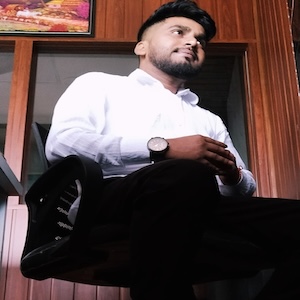Class 12 Anthropology Chapter 3 Human Biological Variation and the Concept of Race, HS 2nd year Anthropology notes, Anthropology Class 12 Question Answer to each chapter is provided in the list so that you can easily browse throughout different chapters SCERT Class 12 Anthropology Chapter 3 Human Biological Variation and the Concept of Race and select needs one.
Class 12 Anthropology Chapter 3 Human Biological Variation and the Concept of Race
Also, you can read the SCERT book online in these sections Solutions by Expert Teachers as per SCERT (CBSE) Book guidelines. AHSEC Class 12 Anthropology Chapter 3 Human Biological Variation and the Concept of Race is part of AHSEC All Subject Solutions. Here we have given Assam Board Class 12 Anthropology Chapter 3 Human Biological Variation and the Concept of Race Notes for All Subjects, You can practice these here.
Human Biological Variation and the Concept of Race
Chapter – 3
| QUESTIONS |
1. Define race.
Ans: Race is a social construct used to categorize people based on physical characteristics such as skin color, facial features, and hair type. While often perceived as a biological classification, race has no significant genetic basis and is primarily shaped by historical, cultural, and political factors.
2. What do you mean by racial criteria?
Ans: Racial criteria are the defining characteristics and features used to classify and differentiate human populations into distinct racial groups.
These criteria often include:
(i) Skin color.
(ii) Hair texture and color.
(iii) Facial features (such as nose shape, eye shape).
(iv) Body shape or stature.
(v) Eye color.
3. Straight hair is found among which racial group?
Ans: Straight hair is most commonly found among people belonging to the Mongoloid racial group.
4. Woolly hair is a characteristic feature of which racial group?
Ans: Woolly hair is a characteristic feature of Negroes Andamanese, Bushman, Papuans, Melanesians racial group.
5. How do you find face form?
Ans: The facial index is found out by dividing the length by its width and thereafter multiplying by 100.
Morphological Facial Index = Morphological Facial length / Bizygomatic breadth x 100
6. What is facial Prognathism?
Ans: Facial prognathism refers to the condition where the lower jaw (mandible) protrudes forward relative to the upper jaw (maxilla), leading to an extended appearance of the facial profile.
7. Who classified the finger patterns for the first time?
Ans: Henry classified the finger patterns for the first time.
8. What is triradius?
Ans: A triradius is a point on the skin, usually found on the palm or sole, where three groups of ridges meet and form a Y-shaped pattern. It is commonly located near the base of each finger on the palm. The triradius is an important feature studied in dermatoglyphics, which is the scientific study of fingerprints and skin ridge patterns.
9. How many triradis are there in a whorl?
Ans: There are two triradis in a whorl. While only one whorl is present in the loops. On the other hand triradius is absent in arches.
10. What are the two types of loop?
Ans: The two types of loop are ulnar loop and radial loop.
11. What are the different finger patterns?
Ans: Three indices are calculated on the basis of the frequency distribution of the different finger patterns.
These are as follows:
(i) Furuhata’s Index = Whorls x 100 / loops.
(ii) Dankmeijer’s Index = Arches x 100 /Whorls.
(iii) Pattern Intensity Index = 2 x Whorls + Loops / n
n being the total number of subjects.
12. How do you find the main line formula?
Ans: The radiant line is fully traced to find-out in which region of the palm it ends, and accordingly the symbol of terminations is determined. This line is called a palmar main line. In this way four main lines can be obtained. These four main lines are named A, B, C, & D. The symbols of the four termination regions of the four main lines given the main line formula. The formula is recorded in order of D.C.B. and A.
13. Write short note.
(a) Furuhata’s index.
Ans: Furuhata’s Index is an anthropological tool used to determine the relationship between the breadth and length of the head. It helps classify head shapes (or cranial types) among different human populations. The formula is:
Furuhata’s Index = Whorls x 100 / loops.
(b) Dankmeijer’s index.
Ans: Dankmeijer’s Index is an anthropological measurement used to determine the shape of the nose. It helps classify nasal types among different human populations. The formula is:
Dankmeijer’s Index = Arches x 100 /Whorls
(c) Pattern intensity index.
Ans: Pattern Intensity Index is a dermatoglyphic measure used to determine the complexity of fingerprint patterns in an individual or population. It reflects how many ridges or pattern types (loops, whorls, arches) are present in the fingerprints. The formula is:
Pattern Intensity Index = 2 x Whorls + Loops / n
(d) Skin colour.
Ans: The people of the world can be classified into three major groups on the basis of skin colour which are:
(i) Leucoderma or white skinned people: The Europeans are the best example of this group. But most of the Western Asiatics, North Africans and Polynesians also belong to this group where skin colour varies from pinkish white to light brown shades. Besides the brown-skinned people like Hamites, Indo Dravidians etc. have also been from this group.
(ii) Xanthoderma or Yellow Skinned people: The Asiatic Mongoloids are the best example of this group. Some Amerinds Bushmen and Hottentots also show a yellow tinge in their skin colour.
(iii) Melanoderms or Black Skinned people: The Negroids are the best representative of this group. Though this people are showing absolute dark colour of skin but others on this groups have a variable skin ranging from dark chocolate brown to many other shades of dark brown. The Papuans, Melanesians, Pre-Dravidians etc. are the appropriate examples of this group.
14. Black skin colour is found among which racial group?
Ans: Black skin colour is found among people belonging to the Negroid racial group.
15. What is epicanthic fold?
Ans: An epicanthic fold, also known as an epicanthus, is a skin fold of the upper eyelid that covers the inner corner (medial canthus) of the eye.
16. Among which racial group epicanthic fold is found?
Ans: The epicanthic fold is commonly found among people of the Mongoloid racial group.
17. What are the different types of epicanthic folds?
Ans: The different types of epicanthic folds are:
(i) Complete Mongoloid Fold: Here a fold skin hangs over the free edge of the entire upper lid and conceals it thoroughly extending from its outer corner to the inner corner. This is very often described as the Mongolian eyelid.
(ii) Interval Epicannthus: A common varity of eye fold in interval epicanthus. Here the eye fold is inner epicannthus or epicanthic or simply “Mongoloid Fold” where the fold covers the free edge of the inner angle of the eye and may extend on to the cheek.
(iii) External Epicanthus: This type starts on the middle part of the upper lid and extended below the outer portion of the upper lid covering the outer corner of the eye.
(iv) Median or Cover Fold: Sometimes a fold of skin hangs over the middle part of the upper lid covering the edge of that region. This type of fold is termed as median or cover fold. In this case both inner and outer corners of the eye remain uncovered (D).
18. Who discovered the ABO blood group?
Ans: ABO blood group is discovered by K. Landsteiner in 1900.
19. What are the different types of blood group?
Ans: The different types of blood group are A,B,O and AB.
20. Who is known as a universal donor?
Ans: Blood group O is known as a universal donor as O blood can safely by transfused to persons of any blood group.
21. Who is known as a universal recipient?
Ans: Blood Group AB is known as a universal recipient as they can safely receive blood of any group.
22. What are the different types of hair form? Discuss.
Ans: The hair can be divided into three types on the basis of form. They are:
(a) Leiotrichous or straight hair: Mongoloid people have this form of hair. This form is sub-divided into three types which are:
(i) Stretched: thick, coarse, straight and stiff hair.
(ii) Smooth: thin and soft hair.
(iii) Flat way: This form has a tendency to become wavy and lengths are long.
(b) Cymotrichous or wavy form of hair: This types is seen in the people of white race as for example Mediterranean Alpine, Nordic etc. This type widely distributed in the places like Western Asia, Europe and parts of North-eastern Africa.
This type of forms subdivided into three types:
(i) Broad way: The waves are broad and lie in one plane.
(ii) Narrow way: Short, stronghly, curved wave lying in one plane.
(iii) Curly: Waves are deep with large sperals not lying in oneplane.
(c) Ulotrichous wolly form of hair: It is available among the Negroes, Andamanese, Bushman, Papuans, Melanesians etc. which shows a considerable range of variation.
It can be subdivided into:
(i) Frizzly: Short and deep waves but not in the form of complete spiral.
(ii) Loose Frizzles: In this form shows circular & flat spirals.
(iii) Thick Frizzles: This form shows circular and flat spirals but spirals are thickly set.
(iv) Filfil: In this type hair remains highly rolled like small knots and appears to be separated by bare spaces on the head. Among the Bushman this type of hair is seen and popularly known as peppercorn.

Hi! my Name is Parimal Roy. I have completed my Bachelor’s degree in Philosophy (B.A.) from Silapathar General College. Currently, I am working as an HR Manager at Dev Library. It is a website that provides study materials for students from Class 3 to 12, including SCERT and NCERT notes. It also offers resources for BA, B.Com, B.Sc, and Computer Science, along with postgraduate notes. Besides study materials, the website has novels, eBooks, health and finance articles, biographies, quotes, and more.



